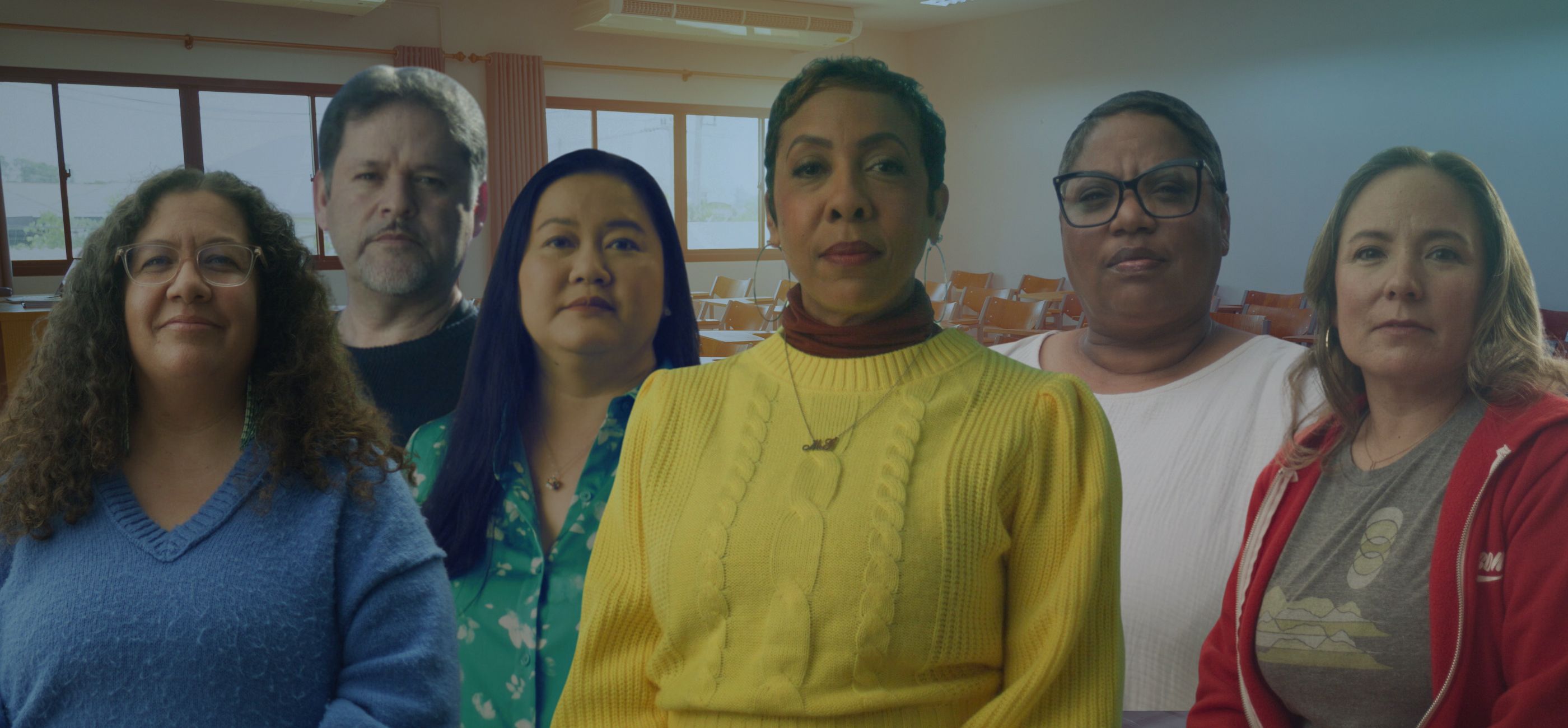Learn More
Gina Gray, Honors English Teacher, United Teachers Los Angeles
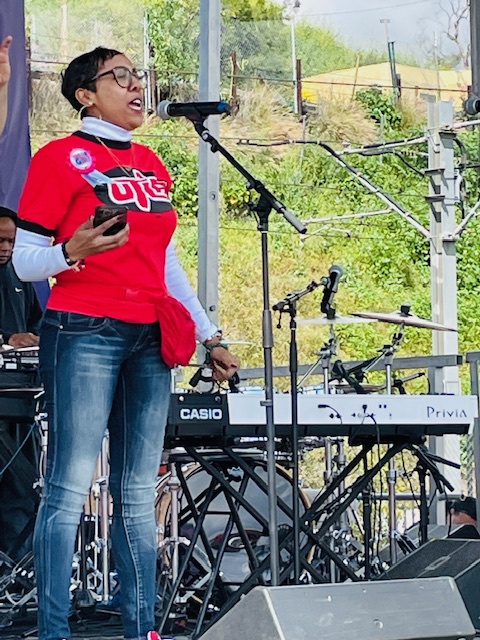 “To be an educator means that I have a responsibility to help spark genius in the next generation,” says Gray, an educator at Middle College High School in Los Angeles. “Everybody has a dream, and this is my dream job.”
“To be an educator means that I have a responsibility to help spark genius in the next generation,” says Gray, an educator at Middle College High School in Los Angeles. “Everybody has a dream, and this is my dream job.”
A second-career educator, Gray has been helping students find their voices and chase their dreams since 2017, when she began teaching. For Gray, being a public school educator is so much more than giving assignments and grading papers. It’s about impacting young people, shaping the future for our communities and creating a more just society— values she was excited to learn she shared with her local association, United Teachers Los Angeles (UTLA), which has embraced and supported her work since her arrival.
“Being a member of UTLA isn’t just about grievances, it’s about growing, supporting and sustaining our ability to be better educators.”
“UTLA is the reason I was able to make it as a first-year teacher,” Gray says. “Being a member of UTLA showed me the power of being part of a social justice union.”
As a new educator, Gray attended a UTLA conference on racial and social justice, where she learned about her union’s role in the creation of L.A. Unified’s Black Student Achievement Plan, which was the response to Black students being left behind and ignored in Los Angeles schools. Gray said being in that space showed her a way to channel the energy she felt when walking into a classroom and seeing stark disparities: with like-minded educators in her union, through professional development opportunities at CTA conferences, and with layers of support through UTLA, CTA and NEA.
“Being a member of UTLA or any union isn’t just about grievances, it’s about growing, supporting and sustaining our ability to be better educators,” Gray says.
River Navaille, Theatre Arts Educator/Adjunct Faculty, Hartnell College Faculty Association
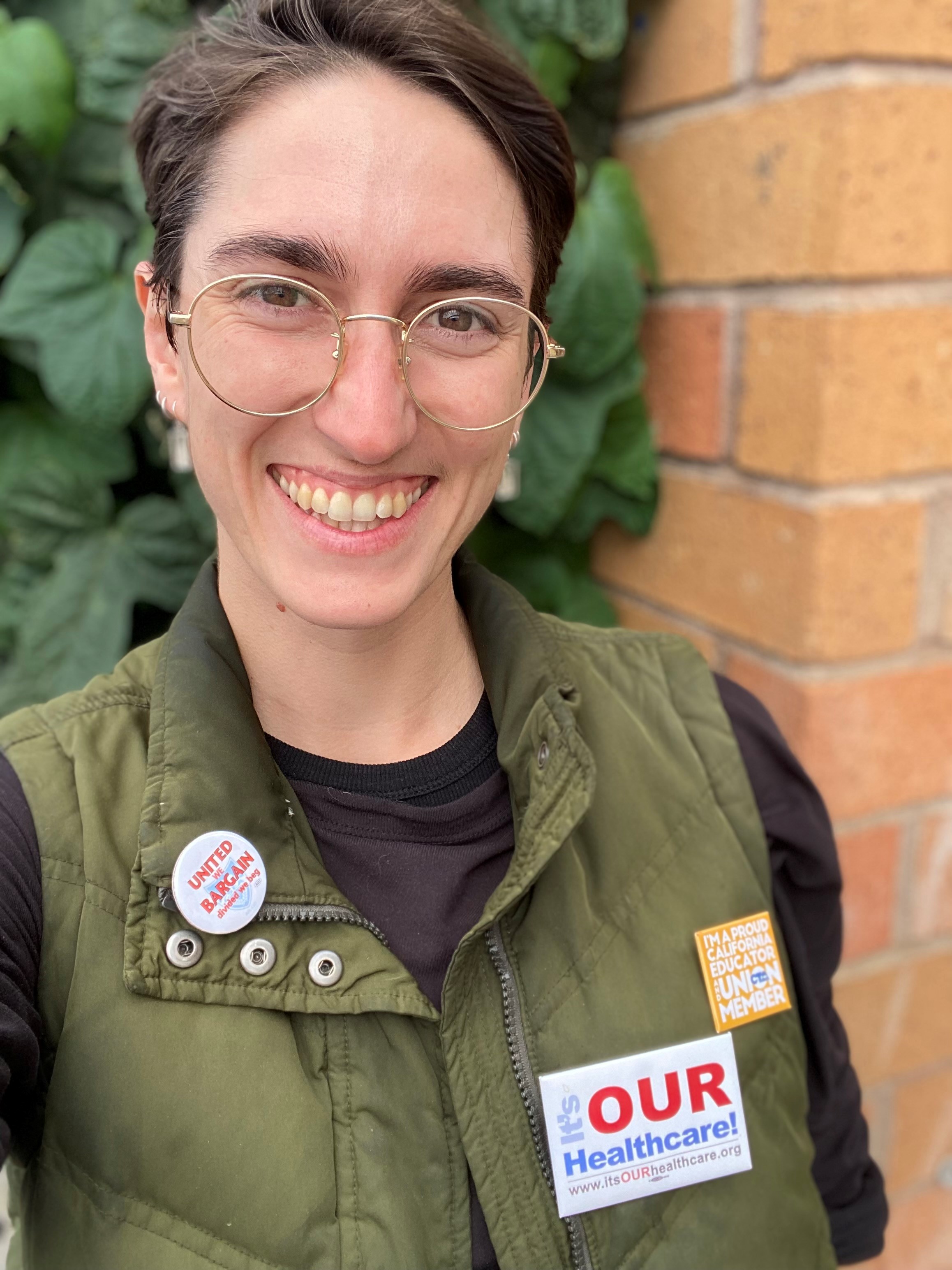 “We’re serving our students as whole people — the end goal shouldn’t be a product,” says River Navaille, a community college theatre arts educator. “We’re serving an entire community, not just checking of boxes or handing out pieces of paper.”
“We’re serving our students as whole people — the end goal shouldn’t be a product,” says River Navaille, a community college theatre arts educator. “We’re serving an entire community, not just checking of boxes or handing out pieces of paper.”
“We had a big contract victory — it couldn’t have happened without all of us working together, and our community too!”
A working theater artist and director, Navaille is an adjunct faculty member at Hartnell College and Monterey Peninsula College, teaching acting and directing plays, sharing the experience of a working artist with their students. Like many part-time community college faculty “road warriors,” Navaille spends a lot of time commuting between multiple colleges, from morning to night.
“As adjunct faculty, you don’t have a lot of control over your schedule,” they say.
This past school year, Navaille worked in a temporary full-time position, but they are looking forward to returning to part-time status, especially with the added benefit of keeping their employer-provided health care — won for all adjuncts by members of Hartnell College Faculty Association (HCFA) during their last bargain.
“I’m really happy we were able to win that in our last contract,” says Navaille, a member of the HCFA Representative Council and Organizing Team. “We had a big contract victory and it couldn’t have happened without all of us working together, and our community too!”
In the classroom, Navaille is passionate about increasing arts access to people of color, students who are LGBTQ+ and other historically marginalized groups. They say that arts continue to be undervalued and threatened in our society.
“Our culture depends on art, but our systems don’t support the people who make it,” Navaille says.
Navaille is excited to continue working in HCFA to increase resources and improve the learning experience for all Hartnell College students.
“We’re stronger together,” they say.
Khamphet Pease, STEM Teacher, San Diego Education Association
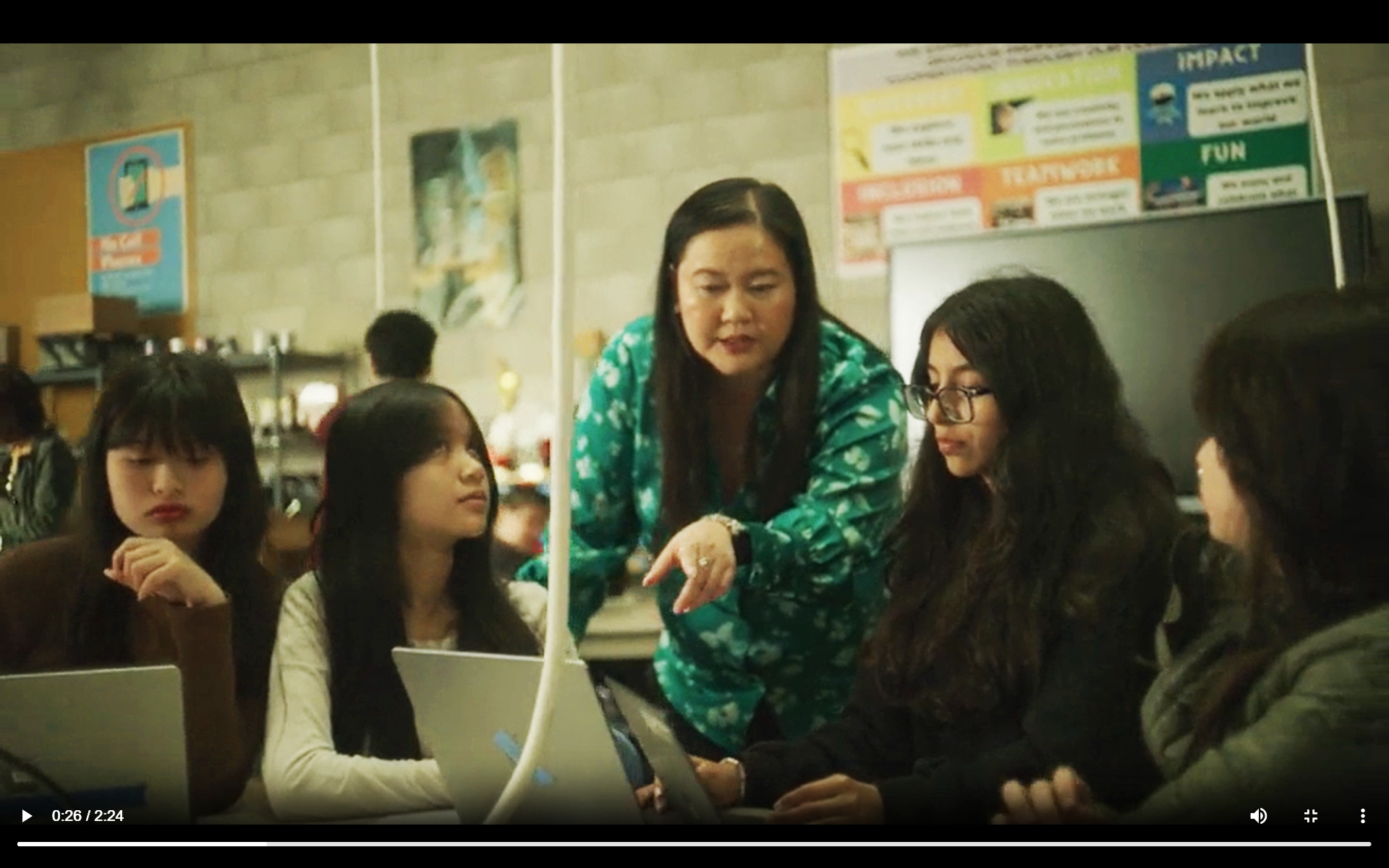 “I’m helping create the future scientists, creators and leaders of this world,” says middle school teacher Khamphet Pease, a member of San Diego Education Association (SDEA). “It’s an honor to be part of shepherding this next generation. I really love what I do, so it doesn’t feel like work.”
“I’m helping create the future scientists, creators and leaders of this world,” says middle school teacher Khamphet Pease, a member of San Diego Education Association (SDEA). “It’s an honor to be part of shepherding this next generation. I really love what I do, so it doesn’t feel like work.”
An educator for 19 years, Pease guides her students through a variety of STEM electives, including 3-D design modeling, artificial intelligence, coding and digital drawing. Her lively classroom is filled with collaboration and discovery.
“We have the students’ best interests at heart. What’s more important than shaping a future generation?”
“My room is a huge lab [with] computers and benches, and students are moving about the room,” Pease says. “Amid of all this, we have a lot of fun too.”
Teaching is Pease’s second career — she started by volunteering at school after work and found that she soon spent her whole workday looking forward to tutoring students.
“It lit a fire under me,” Pease says.
Early in her teaching career, as a new educator, Pease received layoff notices year after year — each time, she says her SDEA colleagues stepped up to advocate for her and save her job. The experience showed her firsthand the protections won by her local union and the need for all new educators to understand the power of solidarity.
“It’s important that we continue to advocate for teachers’ and students’ rights so they can have the best teaching and learning experiences,” Pease says.
Pease wishes it was common knowledge how much time and effort educators put in to reaching, teaching, supporting and engaging California’s 6 million students.
“I wish people were aware of the struggles, and how educators persevere to overcome all obstacles,” she says. “We have the students’ best interests at heart. What’s more important than shaping a future generation?”
Lauren Pomrantz, Elementary Teacher, Live Oak Elementary Teachers Association
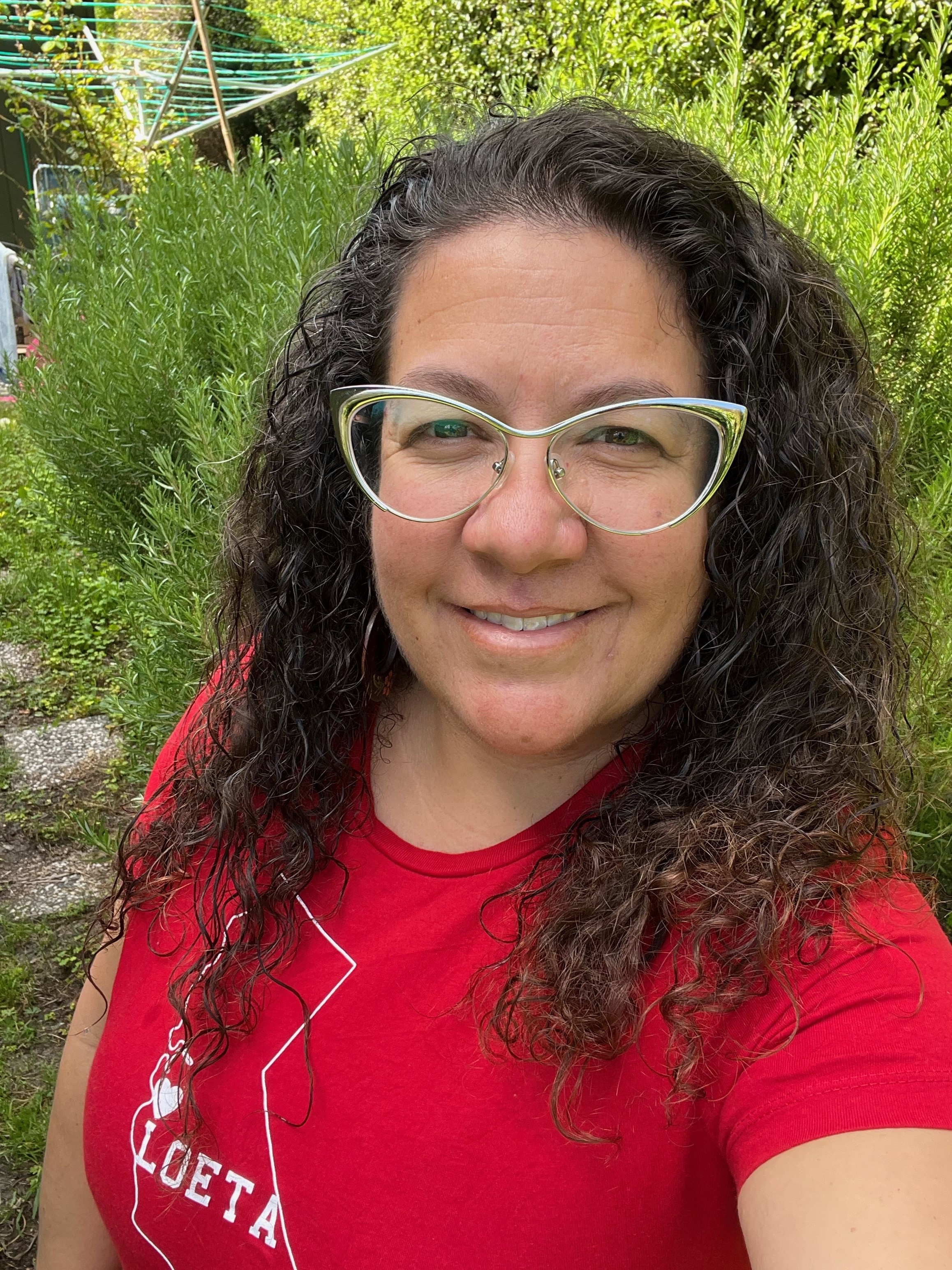 “Learning is a level playing field when given quality instruction and resources, and a community where everyone feels seen and heard,” first grade teacher Lauren Pomrantz says. “I really believe in free and fair education for all.”
“Learning is a level playing field when given quality instruction and resources, and a community where everyone feels seen and heard,” first grade teacher Lauren Pomrantz says. “I really believe in free and fair education for all.”
Pomrantz has taught first grade in the same classroom for 22 years, building a solid educational foundation for a generation of Santa Cruz kids, and counting. She chose to teach at a Title I school to focus her efforts on where they were needed most and she could make the biggest impact. It wasn’t long after she arrived that she learned how important her union was going to be in that mission.
“I quickly realized that being a part of a union meant that not only was I protected and supported, but I was also part of an action-based organization that could advocate for students and push back on the district,” says Pomrantz, president of Live Oak Elementary Teachers Association (LOETA). “The union is where teachers can impact decisions being made in the district.”
While Pomrantz always felt the power and support of her fellow union members, their recent collective willingness to organize and mobilize in defense of their students and each other across important issues has underscored how solidarity and unity in purpose can be unstoppable. It’s similar to a realization she made at a recent CTA conference, when a presenter said educators shouldn’t be afraid to organize in their communities as members of one of the strongest unions in the country.
“I don’t think I had internalized our power until that point,” Pomrantz says.
As districts like hers continue to weather the volatile nature of California’s school funding system, Pomrantz says it’s important to work collaboratively with our communities to educate them about the broken system and fight together for a path forward.
“How do we do better to educate our community about the education funding and how it impacts everything our schools do?” Pomrantz asks.
Cesar Juarez Ruiz, History, Avid Teacher, East Side Teachers Association
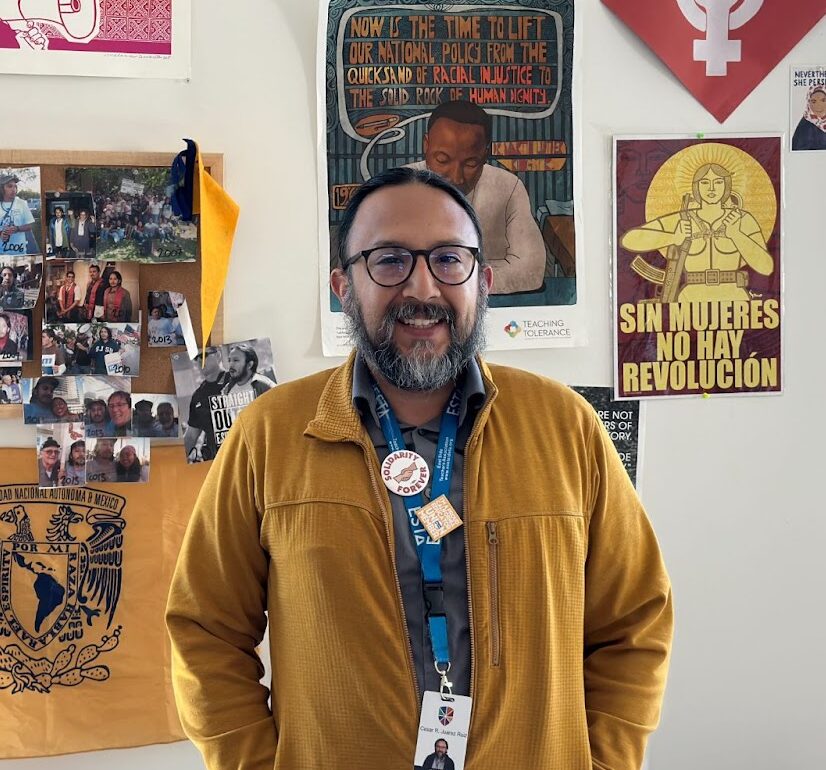 Cesar Juarez Ruiz was inspired to become an educator by his professor in a Mexican-American history class at Evergreen Community College in San Jose. He says learning about the history of people he identified with was empowering, and an absolutely new experience. The instructor issued a challenge to Juarez Ruiz: Bring that passion to kids in his community as a high school teacher.
Cesar Juarez Ruiz was inspired to become an educator by his professor in a Mexican-American history class at Evergreen Community College in San Jose. He says learning about the history of people he identified with was empowering, and an absolutely new experience. The instructor issued a challenge to Juarez Ruiz: Bring that passion to kids in his community as a high school teacher.
“That’s why I became a teacher, to share that same empowering experience with students in my class,” says Juarez Ruiz.
“Being part of a powerful union that supports educators and providing resources for BIPOC educators makes me feel empowered in the work I do.”
He approaches teaching with an equity lens, working to lift students and instill knowledge that helps them better learn about themselves and shape their identities. As an ESTA member, Juarez Ruiz applies the same lens, serving as the chair of his local’s Equity Committee and working to create spaces for educators who are Black, Indigenous and People of Color (BIPOC) to connect and build together, and for mentorship. He is also a graduate of CTA’s Ethnic Minority Early Identification (EMEID) program, which provides resources to emerging BIPOC union leaders.
“I feel a strong sense of family and support in connecting with like-minded educators,” says Juarez Ruiz. “Teaching has historically been under attack — especially teachers of color who want to transform their communities. Being part of a powerful union that supports educators on a statewide level and providing resources for BIPOC educators, it makes me feel empowered in the work I do.”
Juarez Ruiz previously worked at a non-union charter school, and he missed the shared purpose he now feels with fellow CTA members. It’s a feeling he hopes to build with partners and allies in the community to help win the public schools all students deserve.
“People have the power to join educators in transforming public education so we can continue doing the important work in the communities where we live,” he says.
Dr. Angela Pascual, Math/Social Studies Teacher, Stockton Teachers Association
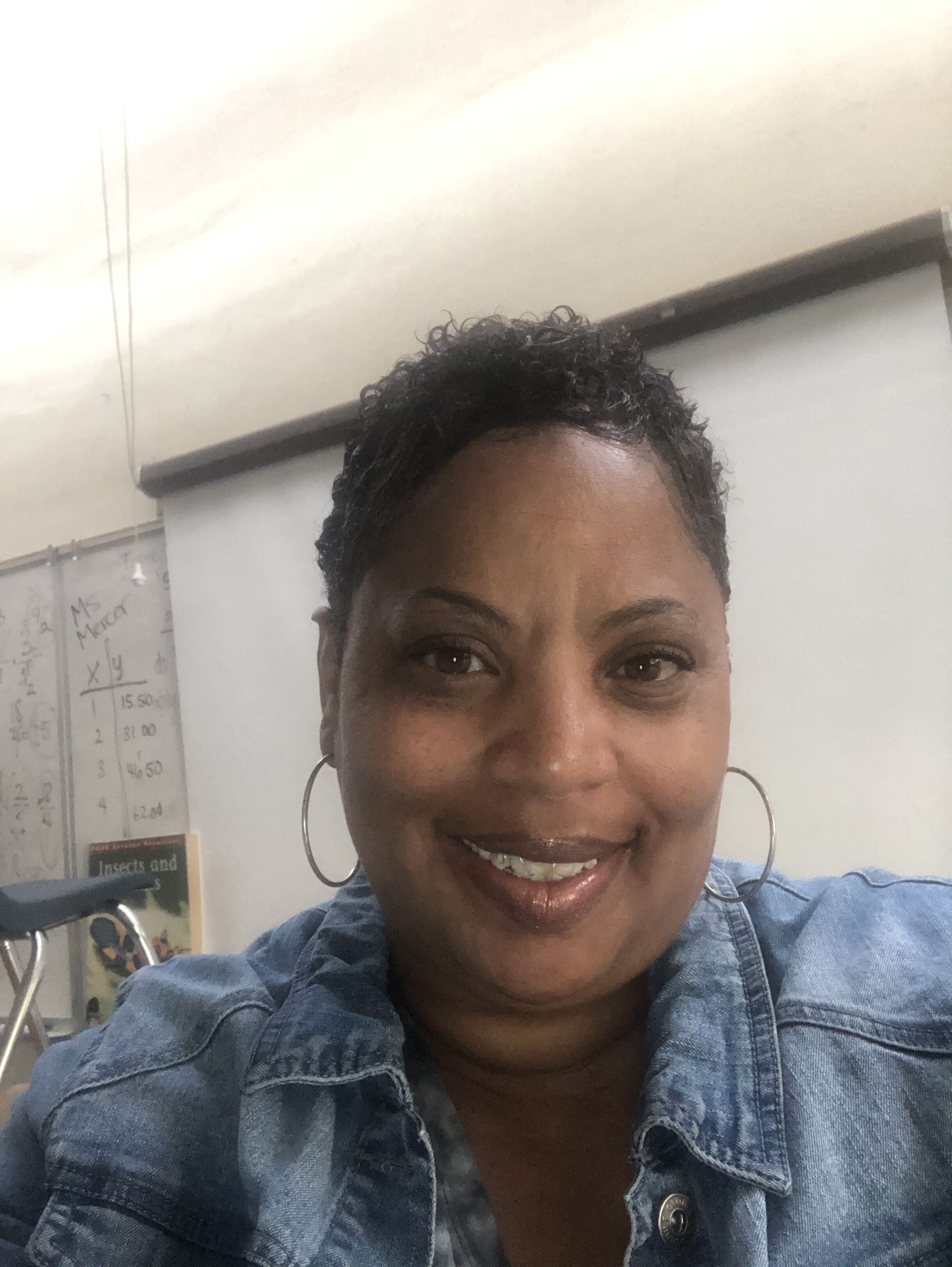 “My goal is to demystify the language of math,” says elementary educator Dr. Angela Pascual, a 28-year educator. “It’s an honor and a challenge. I’m still excited to be in the classroom — this is where the magic happens.”
“My goal is to demystify the language of math,” says elementary educator Dr. Angela Pascual, a 28-year educator. “It’s an honor and a challenge. I’m still excited to be in the classroom — this is where the magic happens.”
The daughter of two Stockton teachers, Pascual walked a Stockton Teachers Association (STA) picket line as a child long before she followed in their footsteps as an educator. Taught the importance of collective power from an early age, Pascual now leads STA as the local’s vice president, working to support teacher growth and efficacy in Stockton.
“I have real conversations with my students about what labels (such as ‘English Learners’) mean and what can happen if you don’t challenge them.”
“Teaching conditions are learning conditions,” she says. “STA works hard to build relationships with admin so we can have programs in place that are responsive to student needs.”
Pascual says she is hyper-focused on raising her students’ math achievement. In a school where 86% of students are learning English, she works daily to dispel the myth that “English learners” can’t excel.
“So I have real conversations with my students about what these labels mean and what can happen if you don’t challenge them,” Pascual says.
Pascual is currently learning Spanish to better communicate with her students and families who are native speakers, and to help break down language and cultural barriers in her classroom. She practices her Spanish with them, asking that they correct her when necessary, building relationships while they learn together.
Being a teacher means planting seeds that might not flower until much later, Pascual says, adding that supporting students is about making lifelong impacts on families and communities. It’s a big part of why she’s so excited about the potential of the community schools movement, where resources and support are tailored to student and community needs.
“I think it could be the flex we need as educators to respond to student needs,” Pascual says.
As a union leader, a current focus for Pascual is working to educate families and community about the school funding process and how their voices are a key part at the local level.
“The majority of our stakeholders don’t understand the Local Control Accountability Plan (LCAP) process and the role they play in it,” she says. “We need to change that.”
Oscar Ramos, Teacher on Special Assignment/Migrant Student Coordinator, Salinas Elementary Teachers Council
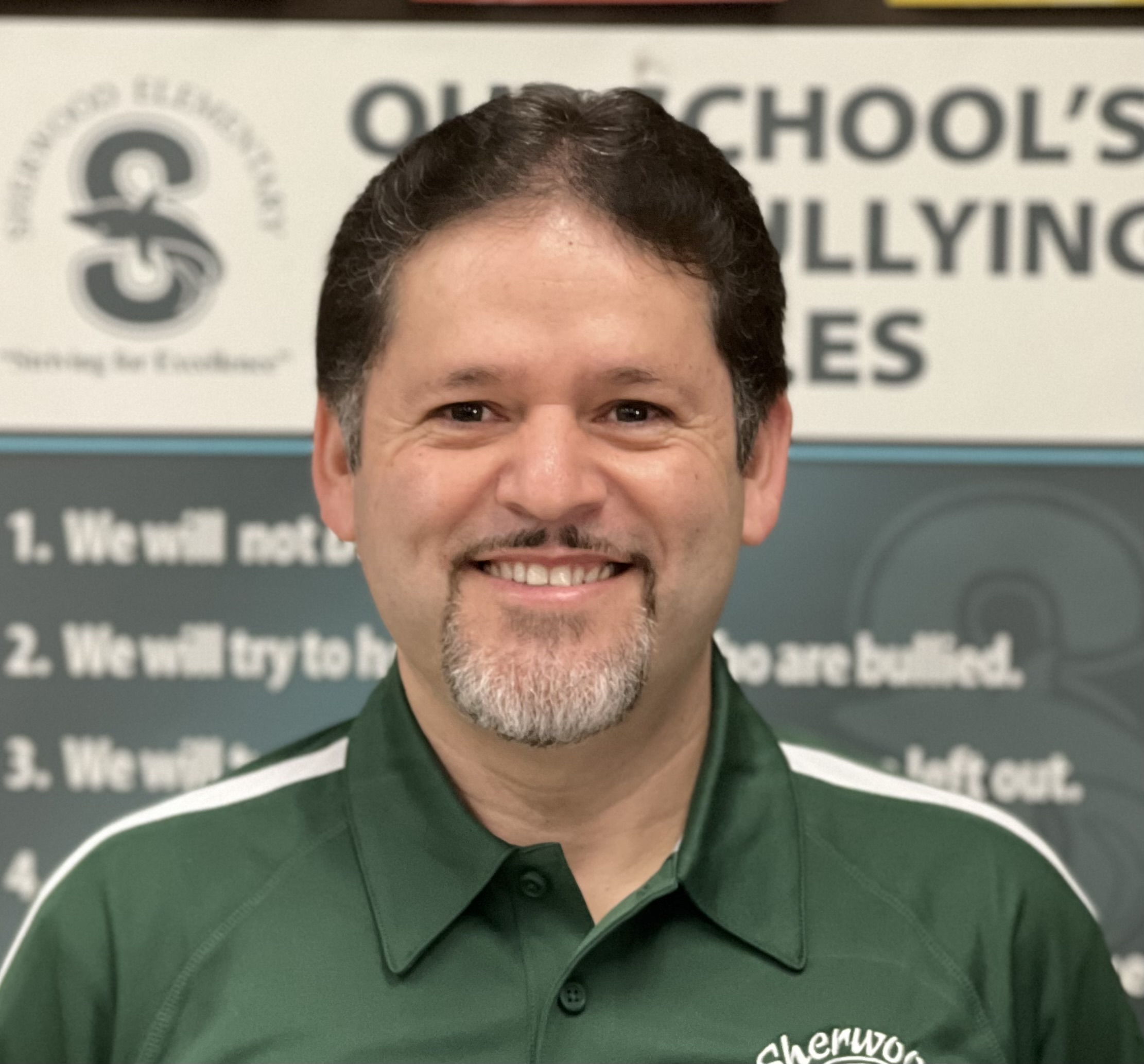 “It’s not just about coming in the classroom and teaching math and reading. It’s about the passion of being an educator,” says elementary educator Oscar Ramos. “It’s about knowing every single student, because they’re all unique.”
“It’s not just about coming in the classroom and teaching math and reading. It’s about the passion of being an educator,” says elementary educator Oscar Ramos. “It’s about knowing every single student, because they’re all unique.”
Ramos connects with his students in agricultural Salinas because their experience is his — Ramos worked in the fields as a farmworker along with his parents, he resided in a labor camp and he understands many of the situations his students experience because he’s already lived them.
“I knew I could be a good role model for them,” says Ramos, vice president of Salinas Elementary Teachers Council (SETC). “Someone who looks like them and has experienced the same things they have — not because I read about it.”
For 27 years, Ramos taught at the same school before taking a special assignment this year to work with historically underserved students in the migrant community. He creates programs that focus on academics and also self-pride and learning about their culture through music, art and expression. It’s an important role and position that SETC advocated to create and fund, in addition to continued advocacy for resources for these students and families.
“Our local union understands that our work is about making connections and building relationships with the community,” says Ramos. “As a union, we can’t do it all on our own and the community can’t do everything on their own either— so we work together to provide opportunity and reach our goals.”
Next school year, Ramos will return to the classroom but his work to support the migrant community will continue — on his own time and without the restrictions of federal law that he says limits what funding can be used on, keeping resources from reaching the students and families who need them.
“Our local union knows what our community’s needs are and we advocate for less restrictions because money is not getting to families like it should,” he says.
Noriko Nakada, English Teacher, United Teachers Los Angeles
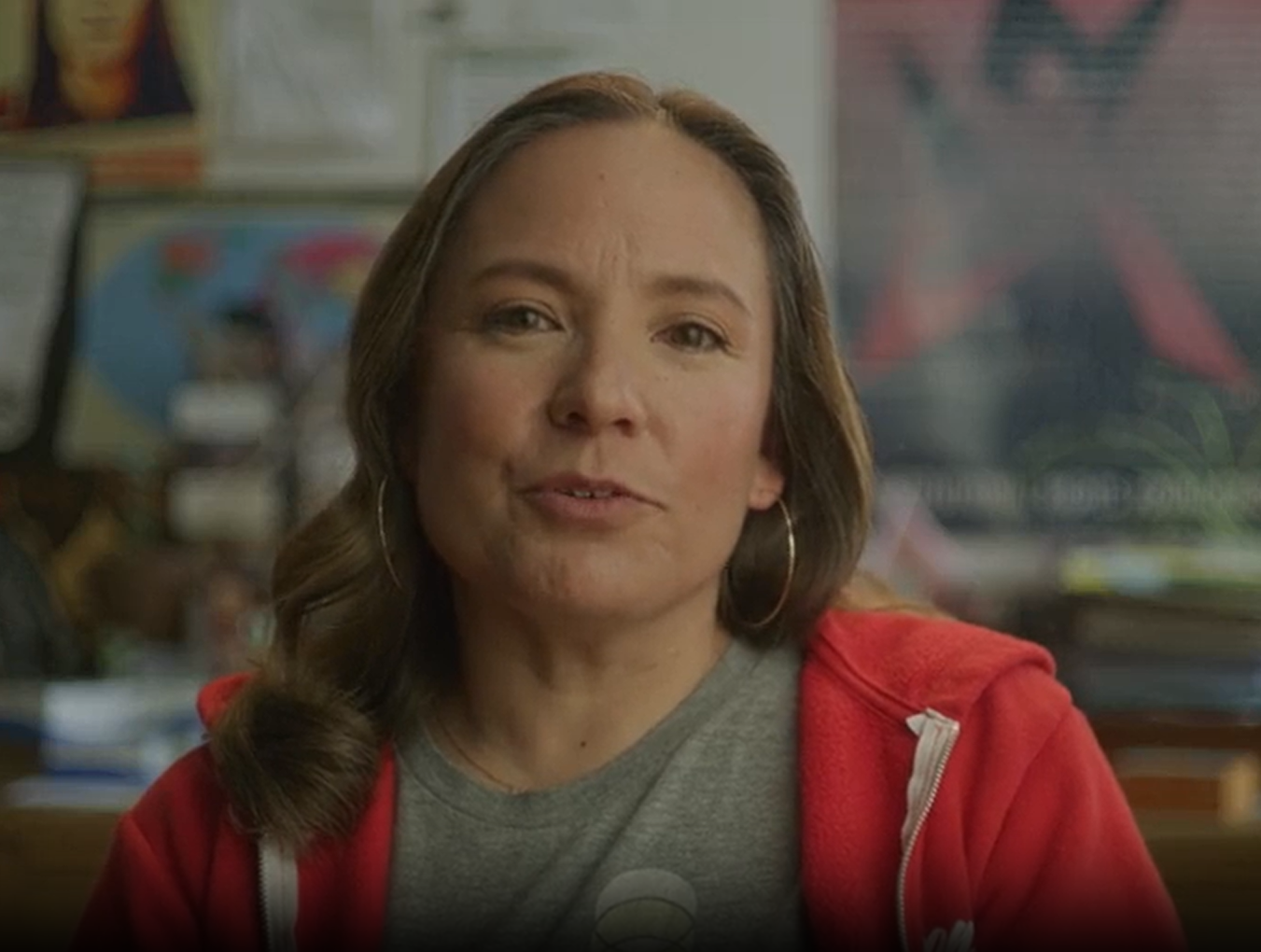 “There are wonderful people making our public schools work at every site,” says Noriko Nakada, a member of United Teachers Los Angeles (UTLA). “Amazing educators and amazing students at every school.”
“There are wonderful people making our public schools work at every site,” says Noriko Nakada, a member of United Teachers Los Angeles (UTLA). “Amazing educators and amazing students at every school.”
“To be part of CTA and what education can be, that’s inspiring work.”
An English teacher for 25 years at Emerson Middle School, Nakada says middle school is a proverbial fork in the road for students and often the last place to engage them before they make important decisions that are very difficult to reverse, which is exactly why she wanted to work at that level to help students make good choices.
“Educators are working to get kids back on track, mentally and emotionally,” says Nakada. “I take a lot of pride in the work we do.”
Nakada’s typical day: Getting her own kids ready for school, making difference for students in her classroom all day, and then making a difference for the community through her work as a UTLA member and leader. As a chapter chair at her school, Nakada advocates for her fellow educators, students and their families. Her union at both the local and state level support her efforts in the same way.
“The organizing that UTLA has done has created more resources and job opportunities,” she says. “California is where progressive policies get made — to be part of CTA and what education can be, that’s inspiring work.”
Nakada is particularly interested in UTLA’s work to build community schools throughout L.A. Unified, saying the deep organizing for transformative educational experiences is making a big difference in the city.
“Bringing our community back into our schools and seeing them as places where our students, families and community can thrive is huge,” she says.
